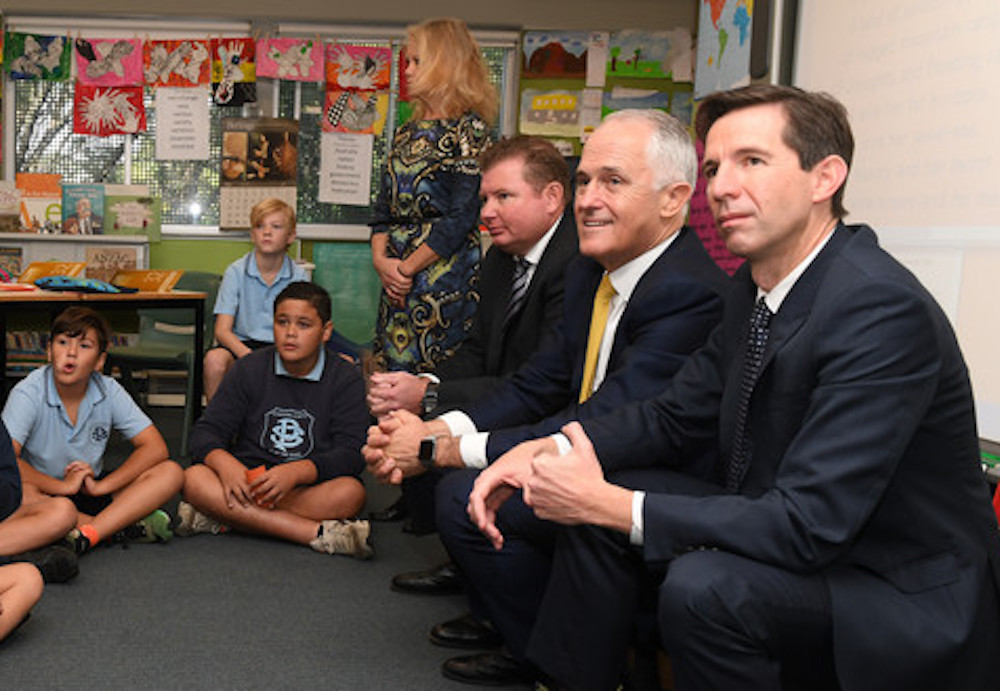
Education minister, Simon Birmingham has said, “our reforms will make a difference because they are acting comprehensively on the David Gonski review handed down six years ago.”
As he speaks of “fair, needs-based, sector-blind funding” and repeats his mantra; “no special deals”, the Catholic Education Office has launched a national advertising campaign slamming the funding changes.
The Conversation published a largely positive article; ‘Gonski 2.0: the school funding plan we have been looking for’, by Grattan Institute’s Peter Goss, while the deputy leader of the opposition, Tanya Pilbersek, is calling it “a shambles”.
Dr Goss wrote that the funding would be distributed more evenly across students regardless of state or sector. He said that the long-term indexation rate had been reduced so school funding aligns with a blend of wages and CPI after 2021, (a saving to taxpayers) and the timeline has been extended to 10 years. He also said Catholic school deals had been “tweaked” in a way that could mean parents pay higher fees.
According to an Australian Financial Review article titled,’Christopher Pyne says Catholic opposition to Gonski is dishonest’ , Dr Goss has suggested that Catholic schools appear to be“using self-serving arguments with cherry-picked data”. Dr Goss pointed to the fact that the schools the Catholic Education Office has put forward as examples of schools that will lose funding, are privileged schools in “leafy green” areas of Melbourne.
Dr Goss says that if the funding models is applied as intended by the government, the “leafy green” suburbs will lose 42 percent of their funding, while the Catholic schools in low SES locations will gain 78 percent. He has suggested this supports the government’s claim that the model will send money where it’s needed.
Who are the big winners and losers?
Back to The Conversation article: Dr Goss says winners include government schools in states that are currently underfunded, especially New South Wales, Victoria and Queensland and Western Australia; and underfunded independent schools. The biggest losers are Catholic schools, and any school that was over-funded.
In a doorstop interview after the meeting with state and territory education ministers in Adelaide, education minister Simon Birmingham was asked why “we have a revolt from every state and territory” if the changes represented “such a boom in funding”. The minister’s reply indicated that he understood the states weren’t initially convinced, but hoped that states would work “constructively” with the federal government.
In a May 18 article titled ‘Coalition won’t reveal conditions attached to Gonski 2.0 until mid-2018’, The Guardian revealed that ahead of the education council meeting scheduled for Thursday May 25, the federal government had advised States they now would have to wait until 2018 to discover the full conditions that will be attached to new Gonski 2.0 funding.
“The revised timeline, to accommodate a second review by David Gonski on improving school performance, means that the first phase of extra funding will flow to schools before states have agreed to reforms that will be tied to the money.”
The federal education minister, Simon Birmingham, has refuted all suggestions Gonski 2.0 cuts funding from schools, citing the fact it increases funding by $2bn over four years and $18bn over 10 years compared with current levels.
A document sent to the states tells them to prepare advice for the Council of Australian Governments to enter a new national agreement on schools by June 2018.
The federal government intends to legislate Gonski 2.0 funding increases in 2017, with funding to flow from the start of 2018.
The Guardian reported that “states will have little bargaining power to argue against or seek modification to proposed reforms, as schools will already have started to receive funding increases that will then be tied to acceptance of them”.
Birmingham has also circulated a list of reform principles before Thursday’s meeting but insists the only condition being set at this stage is that states commit to not reducing their share of school funding.
School News will be updating this article as the story unfolds.







